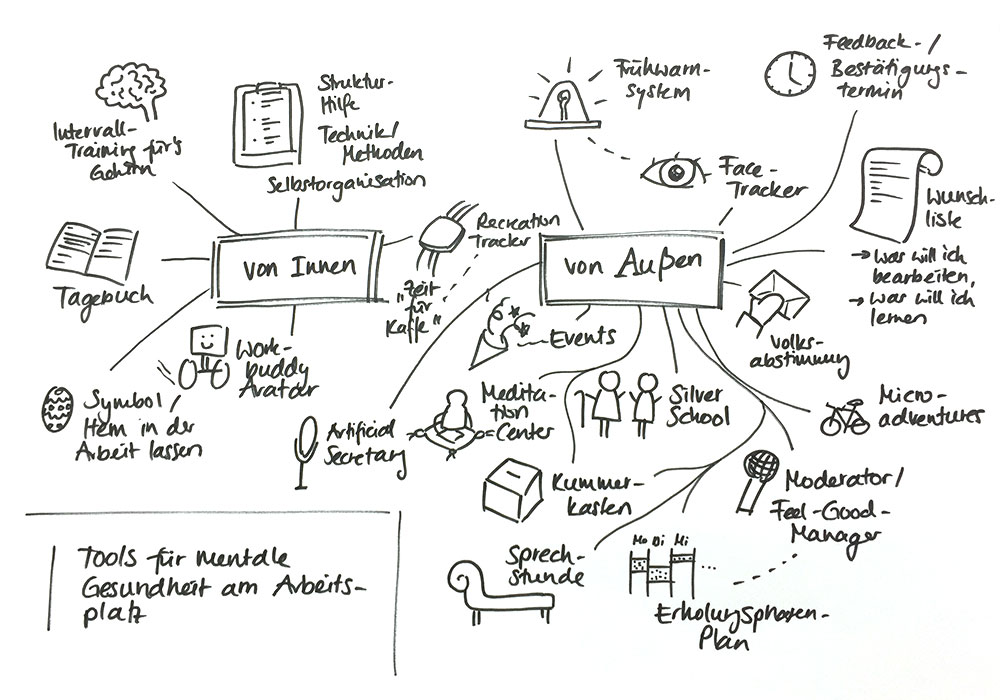Psychological detachment from work
RESEARCH PROJECT
2018
How might we help workers mentally detach from their workday?
CHALLENGE
Psychological detachment from work is an important factor for our mental health. However, more than one in three employees struggles to unwind after a workday.
People who keep thinking and worrying about their job in their free time have a lower quality of recreation. They’re never really able to fully recharge their batteries. This can send them into a downward spiral, that eventually leads to burnout.
In our project we tried to come up with different strategies for tackling this problem. We were encouraged to present multiple rough concepts in a playful manner, since the project was to be completed in a short amount of time.
PROJECT TEAM
Mona Konietzny
Sabrina Montimurro
KEYWORDS
Secondary research, conceptual design, service design
APPROACH
Who should initiate change?
We did secondary research on the causes of mental health issues in the workplace and quickly started brainstorming ideas on how to counteract them.
We soon realized, that there were two main types of interventions that could be made: Actions that can be taken by affected employees themselves—such as maintaining a more structured work-routine or doing mental exercises—or the implementation of outside interventions by the employer.

Corporate Health
With employees gaining more power on the job market, a ‘Corporate Health’ trend has emerged in our society. Considering this, we decided to speak to a leadership coach and ask them about current developments in the field.
We found out that, while employee’s mental health is believed to be of high importance, many organizations shy away from addressing underlying causes in their own company. Interventions often solely consist of providing individual outside counseling to afflicted employees.
We also became aware of the fact that flexible working times and work locations had contributed to a feeling of permanent availability among employees.
We decided to pursue the topic of detachment difficulties.
Common ways for detachment
The strategies we gathered for psychological detachment can be summarized in four different categories:
Boundaries
Establishing physical and/or mental boundaries between work and freetime through daily routines, rituals, environment changes, etc.
Physical activities
Exercising to relieve stress and release endorphins
Shifting focus
Providing new impressions or perceptions to turn attention away from work or shifting your focus through meditation or immersing yourself in a hobby
Self-reflection
Reflecting upon today’s events to work through unresolved feelings of fear and anger with mindfulness-exercises
The task was now to put these strategies into tangible practice.
Requirements
Based on our findings we wanted to propose measures that would have to be implemented by employers, rather than leaving employees to their own devices.
Also we wanted to integrate solutions seamlessly into the work environment so that employees wouldn’t have to invest much time or effort.
- Implemented by employers
- Integrated seamlessly into the work environment
RESULT
We visualized two of our favorite ideas in a short video:
Project Highlights